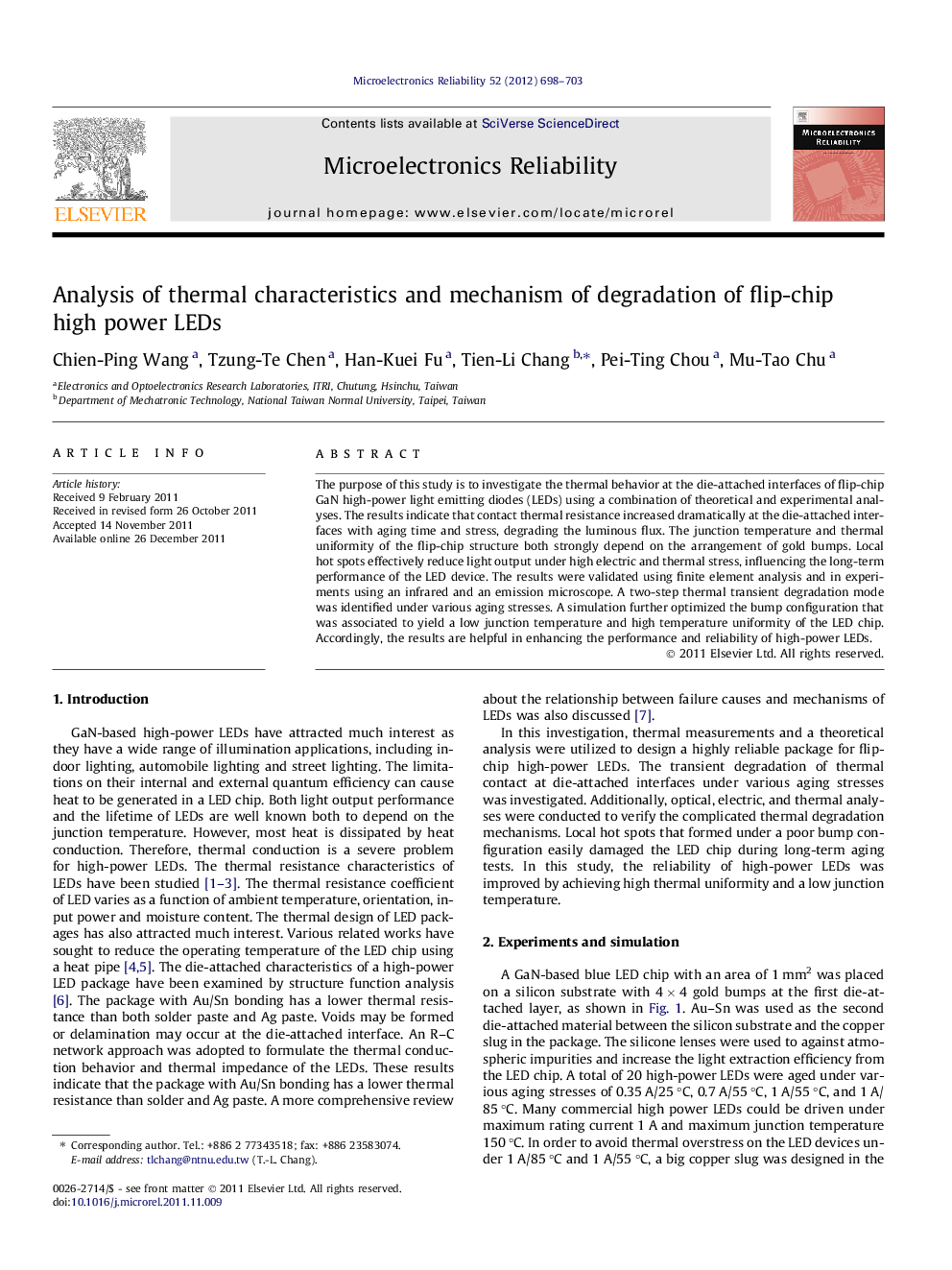| Article ID | Journal | Published Year | Pages | File Type |
|---|---|---|---|---|
| 547185 | Microelectronics Reliability | 2012 | 6 Pages |
The purpose of this study is to investigate the thermal behavior at the die-attached interfaces of flip-chip GaN high-power light emitting diodes (LEDs) using a combination of theoretical and experimental analyses. The results indicate that contact thermal resistance increased dramatically at the die-attached interfaces with aging time and stress, degrading the luminous flux. The junction temperature and thermal uniformity of the flip-chip structure both strongly depend on the arrangement of gold bumps. Local hot spots effectively reduce light output under high electric and thermal stress, influencing the long-term performance of the LED device. The results were validated using finite element analysis and in experiments using an infrared and an emission microscope. A two-step thermal transient degradation mode was identified under various aging stresses. A simulation further optimized the bump configuration that was associated to yield a low junction temperature and high temperature uniformity of the LED chip. Accordingly, the results are helpful in enhancing the performance and reliability of high-power LEDs.
